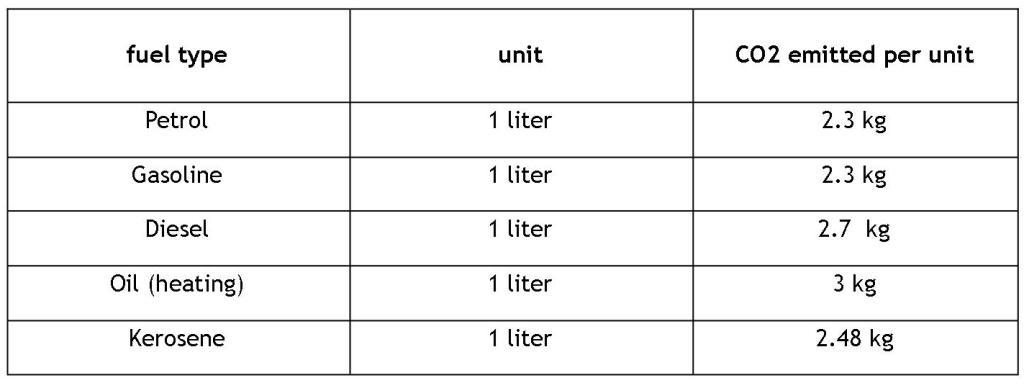Fuel (plan, car, boat…) :
First, some coefficients :

Remember, when you drive a car, the engine burns fuel which creates a certain amount of CO2, depending on its fuel consumption and the driving distance.
Example :
If your car consumes 7.5 liters diesel per 100 km, then a drive of 300 km distance consumes
3 x 7.5 = 22.5 liters diesel.
Then look in the table and find the diesel coefficient : 2.7 kg.
Which adds 22.5 x 2.7 kg = 60.75 kg CO2 to your personal carbon footprint.
Few people express their Carbon Footprint in kg carbon rather than kg carbon dioxide.
You can always convert kg carbon dioxide in kg carbon by multiplying with a factor 0.27 (1000 kg CO2 equals 270 kg carbon).
Now you can calculate your own carbon footprint
(help : To know how many km you have traveled)
Electricity :
First of all, you have to make an electric reading per year.
Electricity – distribution in Fiji :
- fossil energy : 20 %
- hydropower : 80 %
- nuclear : 0 %
- other : 0 % (1998)
So, we will take only hydropower (because of its predominance) for our next calculations.
Good to know :
1 kWh hydraulic produces only 4 grams of CO2 against 1 kg of CO2 for 1 kWh charbon.
Example :
If your home comsumes 20000 kWh per year, it produces 20000 x 4 = 80000 grams of CO2.
Now you can calculate your own carbon footprint
